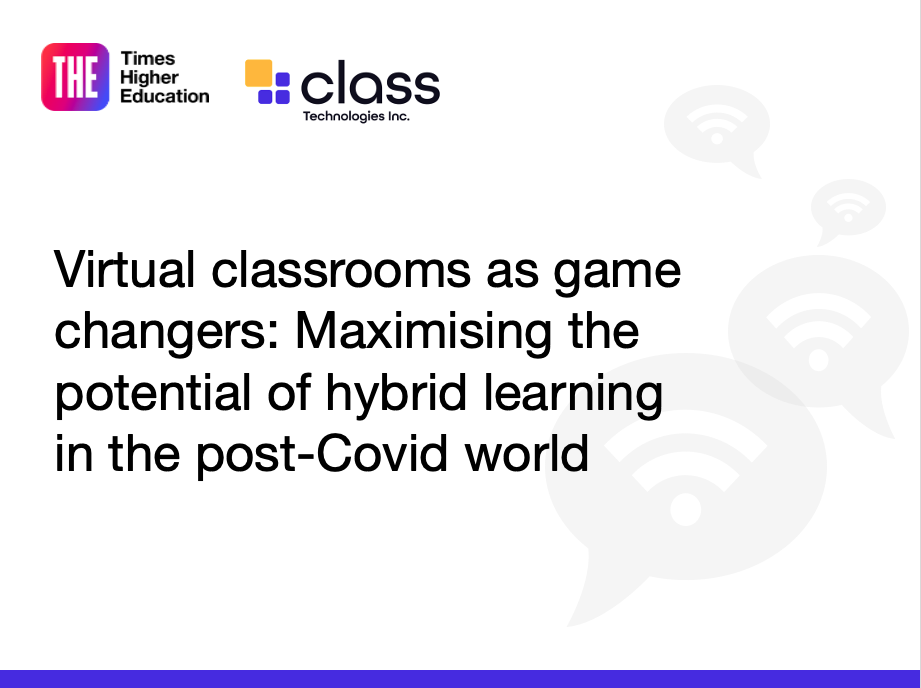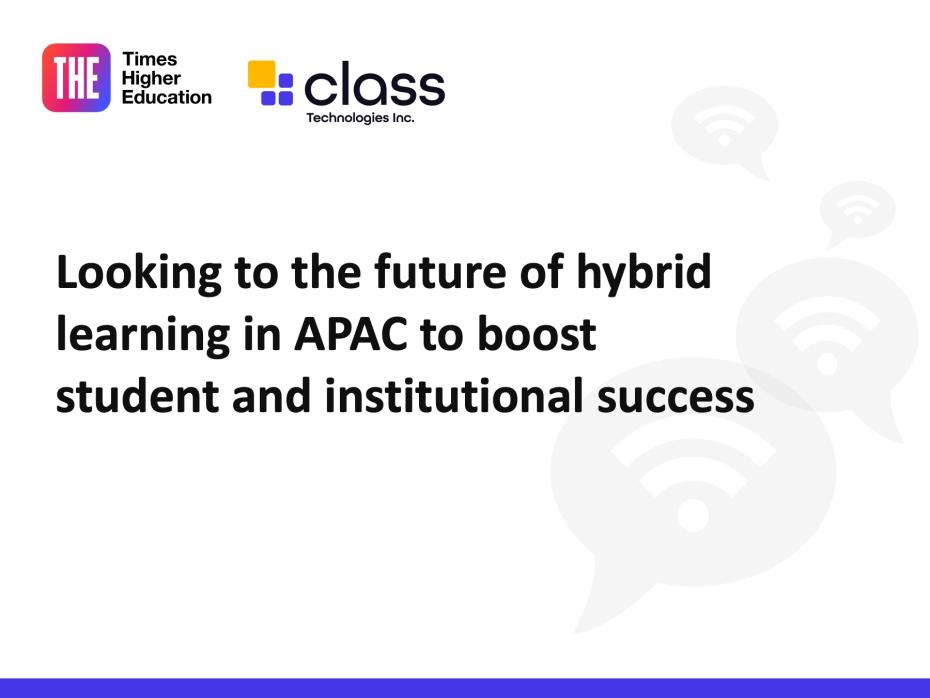The widespread adoption of hybrid learning has improved access and flexibility for students and educators, but it also requires universities to adapt to a broader range of student needs and learning habits to ensure their success.
At a recent Times Higher Education webinar, held in partnership with Class Technologies, a panel of experts from academia and industry discussed how universities across the Asia-Pacific region are adopting initiatives to enhance the student experience through hybrid learning. The panellists shared how they are overcoming problems with student engagement and the ways in which universities can support students as they adapt.
The panel agreed that the flexibility of hybrid learning helps universities enhance student outcomes. “[Students] value the flexibility that online and hybrid learning methods bring to their studies, and they feel that mix of face-to-face and online instruction is more representative of what they're going to experience in the modern workplace,” said Billye Atout, director of Australia, New Zealand and India at Class Technologies.
Atout noted that 63 per cent of students prefer hybrid learning, according to the results of a Times Higher Education Consulting student survey, which appeared in Class Technologies’ 2022 global report. The survey interviewed 636 students across 15 countries about hybrid learning.
Even as universities embrace hybrid models, they must ensure that “online students don't feel like they're second-class citizens,” said Steven Feast, digital learning officer at Curtin University. “But sometimes there's that, ‘out of sight, out of mind’-kind of thing.”
Michael Phillips, associate professor of digital transformation at Monash University, explained that for large group of students, Monash assigns two teachers who work together so that cohorts of on-campus and online students are taught by one of the pair of teachers. This way, teaching staff can ensure they maintain communication with online students, which helps to create strong engagement between cohorts of on-campus and online students, and teaching staff, Phillips said.
Matt Hao Chen, manager of educational design, innovation and quality at Monash University, observed that many students who were used to traditional study struggled to adapt to different learning models. “When we change the delivery format and the teaching approach to a more accurate learning format, some of them actually quite struggle and they are not very engaged,” he said.
To help students to overcome these difficulties, Feast explained that sharing recordings, transcripts of classes and academic materials, accompanied by graded activities such as quizzes, can motivate students to engage with their learning more deeply.
Nonetheless, student engagement can still be a challenge. Chen observed that the majority of students switch off their cameras during online classes, making the teachers feel that they are “talking to a wall”.
The panel agreed that hybrid learning not only gives students the flexibility to choose online or on-campus learning but also combines “the best of both worlds…But if it's not done well, the hybrid classes can give you the worst of both worlds”, Feast concluded.
The panel:
- Billye Atout, director of ANZ and India, Class Technologies
- Matt Hao Chen, manager educational design, innovation and quality, Monash University
- Steven Feast, digital learning officer, Curtin University
- Gitanjali Goswami, branded content manager (APAC), Times Higher Education (chair)
- Michael Phillips, associate professor of digital transformation, Monash University
Watch the webinar on demand above or on the THE Connect YouTube channel.
Find out more about Class Technologies.


comment